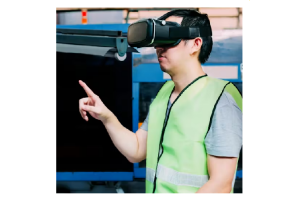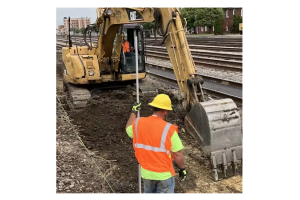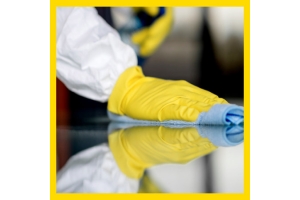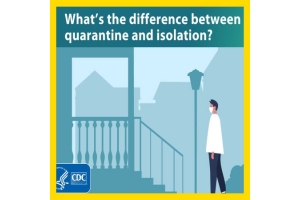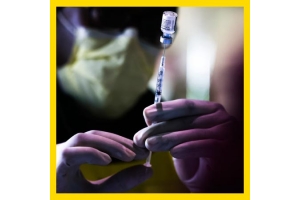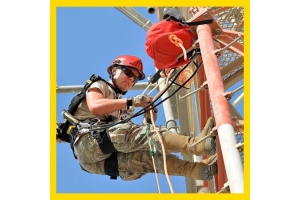Currency
-
March 28, 2022Could you count them all? Could you even count the number of different things you have tripped on? Ok, so there are too many for any of us to count. But, if you really want an impossible task, try counting the number of things you didn’t trip on because you “just stepped over it”, whatever “it” was, like a cord or a hose or a step.
How many steps on stairs have you taken when you didn’t even so much as lose your balance? 100s, 1,000s or tens of thousands? Or is it hundreds of thousands? So, the reality is that we have all “negotiated” hundreds of thousands of what could be called a slip, trip or fall type of hazard, over the course of our lifetime; whether that’s a liquid spilled on the floor or a greasy handrail. And this number could easily be in the millions when you think about certain sports. And yet, those relatively few times when we actually fall, there is an overwhelming tendency to “blame” the hazard: the cord or the hose, or to blame whoever caused the spill or didn’t -
March 28, 2022For those many people who work alone outdoors during the winter months, the conditions in which they perform their various tasks are obviously more dangerous with increased risk of certain, potentially deadly safety hazards in the workplace.
But did you know that those who work indoors by themselves also face increased safety risks and hazards during the cold season? While not as dire as their outdoor counterparts, lone workers performing their tasks and jobs indoors must also be protected from the unique safety hazards that arrive with winter.
Slips, trips and falls
One of those winter safety hazards is the risk of slips, trips and fall, which can increase during the cold, wet months. Dangerous working conditions from ice, sleet and snow, were, according to the US Bureau of Labor Statistics, the cause of more than 20,000 occupational -
March 28, 2022The electrical safety PPE industry landscape is evolving rapidly as workplace safety and wellbeing take centre stage. Over the past decade, there have been countless instances of accidents and injuries to electrical workers. To reduce the risk of such incidents, respective governments, regulatory bodies, and private organisations are taking active measures.
The Electrical Safety Foundation International (ESFI) reports that more than 166 electrical fatalities were recorded in the U.S. in 2019, the highest since 2011. As part of the National Electrical Safety Month, ESFI rolled out its annual effort in May to reduce the number of electricity-related injuries, fatalities, and property losses. The theme for this year’s campaign is Connected to Safety, which is aimed at educating the workforce about solar energy and temporary power related safety precautions. The initiative also aims to help businesses prepare the workforce for electric vehicle charging infrastructure.
-
March 28, 2022
ANALYSIS & COMMENTARY
In January 2022, the U.S. Supreme Court effectively struck down President Joe Biden’s COVID-19 vaccine-or-test mandate, which was to be enforced by the Occupational Safety and Health Administration (OSHA). In the wake of the High Court’s decision, OSHA may retreat somewhat from the headlines, but you can still expect the agency to exercise a major impact on how America’s employers manage their workforces this year.
While the Supreme Court’s ruling only dealt directly with lower appeals court injunctions, in order to maintain the stay blocking implementation, the six majority justices have found that those suing the government were likely to prevail on the merits of their case against the OSHA emergency temporary standard (ETS).
The 6 to 3 ruling may not have literally overturned the agency’s vaccine mandate, but you would have to be pretty foolish or wildly optimistic about changing the justices’ minds to pursue the case any further in -
March 21, 2022
Monitoring benzene exposure levels is critical for the health and wellbeing of staff and the public who may encounter this group one carcinogen. While benzene has many useful and practical applications in industries, the risk to health is undeniable and requires exact and precise monitoring to mitigate damage. Having accurate and dedicated monitoring instrumentation specifically for managing the risk of benzene is essential for any business that works with this chemical.
As benzene is both widespread in industrial applications and poses a significant risk to health, there is pressure from public health and industrial safety perspectives on making sure it is managed and monitored properly. The most effective way of minimising exposure to benzene is through appropriate safety and monitoring practices. Using PID (photoionisation detection) instruments from ION Science is an excellent way of protecting against potential hazards.
ION Science has a dedicated range -
March 21, 2022
Gloves were invented as far back as ancient Egypt, they had no thumb or finger holes but looked more like a pocket, they were used to protect the hands of noble women and were also used as a status symbol by the Pharaohs.
The pocket like glove then evolved into what we would consider a mitten (with a thumb hole.)
Gloves with fingers made from silk were later used as a status symbol of the rich and powerful. They were used to protect hands and keep them soft and were also used when eating to stop the hands from getting dirty.
Today gloves are used for a variety of reasons and within Health and Safety law they come under the Personal Protective Equipment at Work Regulations 1992.
Most health and safety professionals recognize that personal protective equipment (PPE), i.e. gloves, should always be used as a last resort if you follow the general principles of prevention set out in the Management of Health and Safety at Work Regulations 1999 (Schedule -
March 21, 2022Employers in California are now subject to an extension to April 14 of the California Division of Occupational Safety and Health (Cal/OSHA) COVID-19 Emergency Temporary Standards (ETS), which also has been subject to a number of changes employers need to be aware of.
The original detailed and lengthy standards went into effect at the beginning of last year. Although the state’s ETS had been challenged in court by employer groups, they were later upheld. Similar COVID emergency standards were adopted by other states, like Virginia and Oregon, some of which were made permanent later.
The California standards possess significance that reaches far beyond the state’s borders because so many American businesses are either based there or have employees located in the state.
Attorneys urge affected employers to re-examine their workplace COVID-19 safety policies and revise their policies as required by the readopted ETS, to ensure compliance.
The facemask -
March 21, 2022Over the last two years, we have all sought ways to protect ourselves and those around us from harmful bacteria and viruses, and these efforts will likely continue well into the future. These additional precautions, which have become an integral part of daily routines, will translate into professional environments as employees begin to return to their work spaces in the new year. With the influx of people returning to office environments, health and safety will continue to be a number one priority for business leaders across all industries.
For those tasked with oversight of employee wellness, finding new ways to enhance sanitation and hygiene practices continues to be top of mind. Adding protective measures and innovative health and safety products in high-touch areas can help slow down the spread of harmful germs, especially in the workplace. Therefore, these measures and products will play a crucial role in helping to keep everyone safe as we attempt to navigate a return -
March 07, 2022Fall protection (general requirements) consistently tops OSHA’s annual list1 of the most common safety violations cited across industries.
Other fall-related violations, like those related to ladders and scaffolding, are typically not far behind – in 2021, they came in third and fourth, respectively.
Falls are one of OSHA’s Fatal Four and among the most common causes of on-the-job injury and death. Even falls from a short distance can cause serious injury.
With the right protective equipment, training and fall protection systems, it’s possible for businesses to mitigate or even eliminate fall risks on their worksites. Mistakes in fall protection mean that workers can be left vulnerable, even with protections in place.
“with the right protective equipment, training and fall protection systems, it’s possible to eliminate fall risks on worksites”
These are five of the most common fall protection mistakes, why they happen, and -
March 07, 2022Having appropriate footwear is vital to help workers avoid slips, trips and falls, the most common cause of injury in the workplace. But how do you go about choosing the right shoes for your staff and what should you consider?
The odd slip on a wet floor or the occasional trip while walking across the yard can be easily written off as an infrequent occurrence with minimal consequences. But slips, trips and falls while at work should not be underestimated or overlooked.
“Many people don’t see slips and trips as a real issue,” says Kim Van Deere, chartered quality professional and field consultant for QMS International. “But these incidents can lead to limb or joint fractures and long-term problems, including osteoarthritis.”
Indeed, slips, trips and falls, while seemingly innocuous and low risk, remain the largest cause of injuries in the workplace, with 29% of all non-fatal injuries to employees in 2019/20 being the result of these incidents, according to
